A Decade in The Making Burgundy’s 2012 Côte-de-Nuits Grand and Premier Crus Show Character and Complexity Ten Wines From Five Domaines
Aging is synonymous with living, and with experience comes change. As always, wine goes with the flow.
The best of mature wines show their age with grace, providing layers of complex tones; earth and forest while retaining their fountain of youth where the brilliance of a fruit core and the freshness of acidity has not faded past recognition. If a wine can be brooding but bright, deep and delightful, then its senior years can be marked as successful, especially when it comes to Pinot Noir.
Wine is evolution from vine to cellar and from bottle to glass; the maturation process is a complicated one. The science—involving the ratio of sugars, acids and phenolics and the slow polymerization of tannins—is as dry as a dusty old flagon of Gevrey-Chambertin. But even the most carefully-kept bottles of the most age-friendly wine have an apex, a window of optimal drinkability wherein the all the magic that is likely to happen has already happened. For a red Burgundy from a solid (but not great) vintage, that window hovers at around a decade.
The wines in this selection represent ‘12s from five top producers in the Côte-de-Nuits, Burgundy’s red wine Valhalla—wine that are not only standing proudly within their personal windows-of-drinkability, but performing under a spotlight.
Liquid Memory: The Notion of Maturing Wine
The science of maturing wine may be dry, but the romance of drinking it? How sweet it is! If you were lucky enough (or sufficiently prescient) to have had a milestone in 2015 or 2019, a wedding, perhaps, or the birth of a child or a grandchild, you should sock away a few Burgundies—these are legendary vintages that may come along only once every couple decades.
But these wines are a long way from being fully ready to enjoy; they will not truly unfold for another ten years at least, and may not be done evolving until long after that. With 2012, a better-than-average vintage, it is to be expected that they are fully coming into their own right about now. Wherever you were in 2012—the year that Barack Obama won re-election and Hurricane Sandy lambasted the Atlantic Coast—these wines have borne the years at least as well as you have and perhaps better. They have evolved remarkable flavors and textures that you would never have experienced had you consumed them upon release. They have enjoyed a long, cool and still hibernation and are now ready to come out and play—preferably, like Proust’s Madeleine, to tickle your memories of a decade gone by.
Vintage 2012: ‘Classic’ Côte-de-Nuits
As happens in Burgundy from time to time, 2012 snatched victory from the jaws of defeat. The combination of a cold and wet spring led to a difficult flowering, and the insult-to-injury was a catastrophic hailstorm on June 6. From that point, mildew became an issue, and estates that did not treat for the numerous outbreaks tended to see their yields devastated. It was not until late August that the weather finally decided to cooperate, and ripening was speedy because the crop level was so low. The harvest began in late September, and top estates took particular care in sorting to remove damaged or dehydrated bunches.
Let’s be honest, 2012 was no 1961, but there have been comparisons made: A rough start led to reduced yields and a balmy recovery concentrated juice to produce some truly remarkable Pinot Noirs in the Côte-de-Nuits. Apart from the southern part of Nuits-Saint-Georges the Côte de Nuits survived the hailstorms relatively unscathed, and the wines from Premier and Grand Crus are, by some, considered superior to any recent vintage, including 2010, 2009 and 2005.
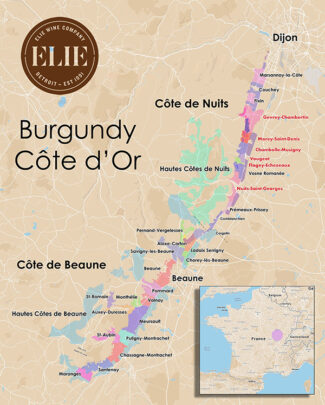
Domaine Gallois
(Gevrey-Chambertin)
Prior to taking over the family estate in 1989, Dominique Gallois studied catering in Paris and ran his own restaurant for six years. When he returned to Burgundy, the domain consisted of six acres in Gevrey-Chambertin which his father had managed for forty years, selling the grapes to négociants. Dominique began to renovate the property and in 1989 (after purchasing additional acreage in Combe aux Moines, Petits Cazetiers and Goulots), he began to bottle his own product, looking first to private customers to build a reputation.
Recognizing that he works in terroir that is the envy of the world, Dominique takes special care to tend to the domain by hand, without pesticides or herbicides. Says Gallois, “Our year is quite full; winter months are dedicated to vine maintenance and Guyot-style pruning. During spring and summer, several tasks are performed allowing yields to be controlled and managing the healthiness of the future grapes. Harvesting is manual—we count on a small, faithful team to carry out the first sorting on the vine. Thereafter, grapes pass over a sorting table where bunches are inspected so as to conserve only the best fruit.”
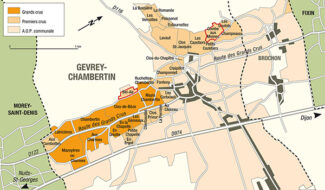
“The Emperor would drink only Chambertin.” – Louis Constant Wairy, Napoleon’s valet.
As those schooled in Burgundian lore know, during the nineteenth century it became fashionable for villages in the Côte d’Or to adopt double-barreled names, adding a hyphen followed by the name of their most famous vineyard: Thus Chambolle added Musigny and Gevrey added Chambertin.
In minimalism, less may be more, and in wine—especially those with a hyphenated name—more may be less; a village-level Gevrey-Chambertin, for example, does not seek to compete with the quality of ‘Le Chambertin’ itself. But if nothing else, its name reminds you that it comes from a rarefied zip code. And to be sure, the region is hallowed grapeland, graced with the Holy Trinity of terroir—elevation, climate and soil structure. Contained within the appellation are nine Grand Crus and 26 Premier Crus (whose name on the label may be followed by the name of the climat of origin) as well as well as nearly a thousand acres of Villages wine.
Gevrey-Chambertin wines are full-bodied, rich, and meaty in their youth and mature to feature notes of leather, game and underbrush.
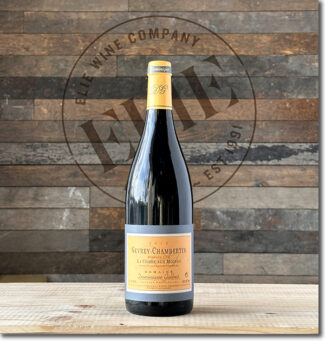 Domaine Gallois, 2012 Gevrey-Chambertin Premier Cru La Combe aux Moines ($110)
Domaine Gallois, 2012 Gevrey-Chambertin Premier Cru La Combe aux Moines ($110)
Combe au Moines is one of the most physically elevated climats in Burgundy, lording over the commune of Gevrey-Chambertin at an elevation of 1300 feet. The twelve-acre vineyard produces Pinot Noir that is bright, earthy and slightly rustic—qualities that grow more pronounced with age. Like much of the Cote-de-Nuits, Combe soils are built upon limestone, although within the vineyard they are quite rocky and free draining and, by offering scant fertility, lessen the vigor of the vines and lead to the production of small, concentrated grapes. Unusual for the region, the vineyard faces slightly north, although the steep slope distributes the available sunshine.
Domaine Philippe Charlopin
(Gevrey-Chambertin, Flagey-Échezeaux)
According to Master Sommelier Ian Cauble, “The first taste of Charlopin’s hauntingly unique wines will turn a casual Burgundy lover into a serious aficionado. You won’t find heavily extracted, fruit-forward Pinot Noir here, but rather, the epitome of tradition and terroir expression.”
Prior to the 1970s, Philippe Charlopin was, like his father before him, a vine renter; he did not make a serious purchase until ’78, when he bought vines in Gevrey-Chambertin on the advice of his friend and mentor Henri Jayer, whose own Grand Cru Richebourg averages around $16,000 per bottle, higher than Romanée-Conti. Even so, the late Jayer’s mission statement was simple: ‘Make wines that are good to drink both when young and old.’
Philippe Charlopin operates on this same principal. He gradually expanded his holdings to 60 acres of vines divided into 140 parcels, including 12 acres in Chablis—a purchase that came about after his Chardonnay-loving son, Yann, came aboard in 2004. Today, the father-son team wrings the most from their superb terroirs while maintaining sustainable practices in the vineyard.
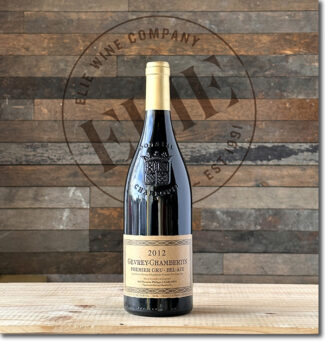 Domaine Philippe Charlopin, 2012 Gevrey-Chambertin Premier Cru Bel-Air ($150)
Domaine Philippe Charlopin, 2012 Gevrey-Chambertin Premier Cru Bel-Air ($150)
Bel Air is the only Premier Cru climat sitting above Gevrey-Chambertin’s Grand Cru vineyards on the mid-slope of the Côte d’Or, at elevations approaching a thousand feet. The cooler mesoclimate makes for leaner, less-concentrated wines than those of the Grand Cru, yet Bel Air wine still displays much of the same balance and elegant red fruit character of its parent appellation.
The vineyard was created from barren land in the 1960s and acquired Premier Cru status only in 1987. Some critics believe that especially in warm, ripe vintages, when the altitude is not a disadvantage, Bel Air can produce wine that closely resembles its neighbor, Chambertin, Clos de Bèze. The wider Bel Air lieu-dit sits between the woods and the western border of the Clos de Bèze Grand Cru. It also borders the upper Ruchottes-Chambertin Grand Cru to the north, however, only the lower portion of the lieu-dit is classified as Premier Cru.
Domaine Bertagna
(Chambolle-Musigny, Morey-Saint-Denis, Vosne-Romanée, Vougeot)
With 18 wonderful appellation plots, 12 of which are Premier and Grand Crus, Domaine Bertagna has an obvious garden of delights from which to draw. The estate itself once belonged to Cistercian monks, famous for founding the Clos de Vougeot in the 13th century; the cellars and vineyards are still located in the heart of the village near the Château and its ancient Chapter House; the winery has been owned by the Reh family since 1982 and today is managed by Eva Reh.
Although at 52 acres the property is extensive, many of its terroirs are similar—well-drained and stony, with a thin layer of chalky subsoil over a deep rocky base—significant mineral deposits of manganese and iron oxide give the soil a mahogany color.
Harvest is carried out by hand, beginning first with the domaine’s vineyard sites in the Côte de Beaune, followed by those in the Côte de Nuits. After fermentation, wines are aged for approximately 18 months in French oak barrels with various levels of toast. The domaine’s flagship, Clos de la Perrière, fermented with natural yeasts and aged in 50-percent new French oak barrels for 18 months.
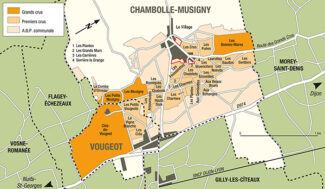
Along with Vosne-Romanée, the communes of Chambolle-Musigny and Gevrey-Chambertin round out the ‘Big Three’ of Burgundy reds. Much has been written to compare the last two, perhaps best summarized by Nadine Gublin of Domaine Jacques Prieur: “Chambertin has a colder climate and tends to have more structure than Musigny; Musigny is more forward and elegant; it has a body that is very silky and satiny, while Chambertin has greater finesse, but needs more time to reveal itself—it is more serious and discreet.”
There is a marked difference in size, too: Chambolle-Musigny is relatively small, covering five hundred acres, of which 180 are Premier Cru—the appellation has 24. There are also two Grand Cru climats, Bonnes-Mares, which links its vineyards to those of Morey-Saint-Denis, and Musigny, overlooking the Clos de Vougeot. The prestigious Premier Cru site Les Amoureuses, however, is doubtless on their level.
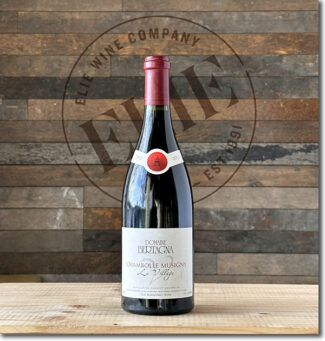 Domaine Bertagna, 2012 Chambolle Musigny ‘Le Village’ ($98)
Domaine Bertagna, 2012 Chambolle Musigny ‘Le Village’ ($98)
Domaine Bertagna ‘Le Village’ hails from a one-acre parcel of 87-year-old vines overlooking the village of Chambolle-Musigny. Sitting just above several Premier Cru sites, the terroir begins in shallow red calcareous clay with rocky limestone subsoil underneath.
After strict pruning and a mid-season green harvest to control yields, Bertagna grapes are hand-picked and then hand-sorted at the vineyard and the winery. Natural yeast fermentation ensues before aging in 30% new French oak barrels for 16 to 18 months.
Says winemaker Eva Reh, “2012 turned out to be quite a good vintage for us. Many are referring to it as ‘classic’, as good as, perhaps superior, to anything recent.”
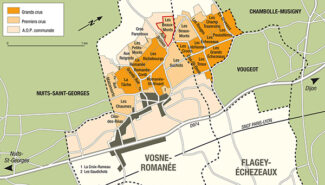
Originally named just Vosne, the village took the suffix Romanée in 1866 in honor of its most prized vineyard, La Romanée—a habit of many Burgundy communes of the era. From the perspective of a wine lover, it may be grouped together with neighboring Flagey-Échezeaux; while the villages are entirely separate, their finest vineyards are clustered together immediately north of Vosne-Romanée and take that latter title.
The entire surface area of Vosne-Romanée Grand Cru vineyards (excluding Flagey-Echézeaux) is 67 acres, about half the size of the single Clos de Vougeot climat just across the commune boundary. Even so, the commune of Flagey-Échezeaux with the Échezeaux and Grands-Échezeaux sites included, has more Grand Cru surface area than the Premier Crus and Villages combined. Vosne-Romanée is divided between six individual climats—La Grande Rue, La Tâche, Richebourg, La Romanée, Romanée-Saint-Vivant and the most famous, Romanée-Conti. The best vineyards lie on the mid-slope of the Côte d’Or escarpment. Around these prestigious sites are dotted the Premier Cru vineyards and some entirely unclassified land—the difference between a grand cru vine and one deemed worthy only of the regional Bourgogne appellation is sometimes a matter of a few feet.
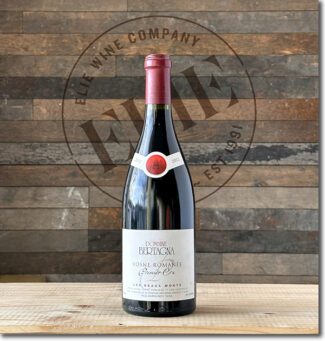 Domaine Bertagna, 2012 Vosne-Romanée Premier Cru Les Beaux Monts ($140)
Domaine Bertagna, 2012 Vosne-Romanée Premier Cru Les Beaux Monts ($140)
Like most of its neighbors on this part of the Côte d’Or, Les Beaux Monts is a climat planted entirely to Pinot Noir, and is known for full-bodied yet elegant wine with ripe fruit character. It’s middle-sized at just under 30 acres, and is composed of a patchwork of soils that straddle the commune boundaries of Flagey- Échezeaux and Vosne-Romanée at the western end of the vineyards.
Fermented on native yeast, the wine sees a substantial proportion of new oak, developing a powerful structure as the brilliance of the fruit rides through with intensity and refinement. This was a wine originally built to last, and one which has now come into its own.
Domaine Bouchard Père & Fils
(Nuits-Saint-Georges)
Bouchard Père & Fils can rightly be called a Burgundian icon. Founded in 1731, the estate owns and manages 321 acres, with 30 acres classified as Grand Crus and 183 as Premier Crus, making Bouchard the largest land-holders in the Côte d’Or. In 1985, the domain was purchased by the Henriot family of Champagne, and in 2013, Alsace-born Frédéric Weber took over the cellars.
Says Weber, “Year after year, we are committed to achieving the truest and finest expression of each terroir, with respect to traditions, and the specificities of each vintage. I work with the same team and use the same equipment at the winery, whether crafting a Rully, Côte de Beaune-Villages or a Clos Vougeot or Montrachet.”
Under Weber’s guidance, the estate remains committed to sustainable practices and in 2015, was awarded the highest environmental certification in France, the Haute Valeur Environnementale by the French Government.
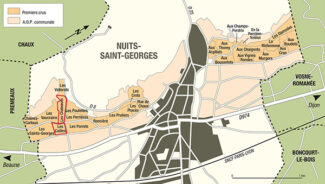
With the village of Nuits-St-Georges itself as the fulcrum, the robust appellation Nuits-Saint-Georges extends to the north as far as the border of Vosne-Romanée, while the southern section lies partly in Nuits-Saint-Georges and partly in Prémeaux. The wines from each section are unique in style and according to experts, with differences defined (in the main) by the lay of the land. The soils in the northern sector are built around the pebbly alluvium that washes down from up-slope, and in the low-lying parts, around silty deposits from the river Meuzin. In the southern sector the alluvia at the base of the slopes originate in the combe of Vallerots where there are deep marly-limestone soils, while at the top of the slope, the soil has nearly all eroded away and the rock is near the surface. In both regions, favored exposures are mostly to the east or southeast.
Producing predominantly red wine, Nuit-Saint-George bottles display the muscularity and breeding most sought after in Burgundy—the ability to improve with bottle age. When young, the wine display aromas of cherry, strawberry and blackcurrant, and when matured, leather, truffle, fur and game.
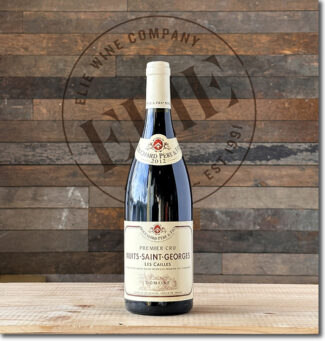 Domaine Bouchard Père & Fils, 2012 Nuits-Saint-Georges Premier Cru Les Cailles ($130)
Domaine Bouchard Père & Fils, 2012 Nuits-Saint-Georges Premier Cru Les Cailles ($130)
Les Cailles is a highly-regarded Premier Cru climat in Nuits-Saint-Georges lying between Les Saint-Georges and Les Porrets-Saint-Georges vineyards. The 17-acre site occupies a position on the hill perfectly angled to take advantage of the morning sun; as it slopes gently toward the east, the vines are bathed in sunlight for a good portion of the day. The soil is pebbly and sandy, and derives its name from the French term for pebble. So good is the terroir that this section of Nuits-Saint-Georges is considered by many to be worthy of an upgrade to Grand Cru status.
Bouchard’s 2012 partnered weight with acidity, creating a combination of freshness and jelly-like richness which has required a full decade to properly elicit all its nuances.
Domaine Jean-Jacques Confuron
(Nuits-Saint-Georges, Vougeot)
The 20 acres that make up Domaine Jean-Jacques Confuron are now controlled by Sophie Meunier-Confuron and her husband Alain Meunier, who converted all parcels to organic viticulture in 1990. This includes excellent parcels of Premier Cru and Village vines in Vosne-Romanée, Chambolle-Musigny and Nuits-St. Georges as well as two great Grand Crus, Romanée-St. Vivant and Clos Vougeot.
The Confurons vinify according to the Burgundian mantra of ‘power without weight’, seeking a depth of flavor balanced by refinement and elegance.
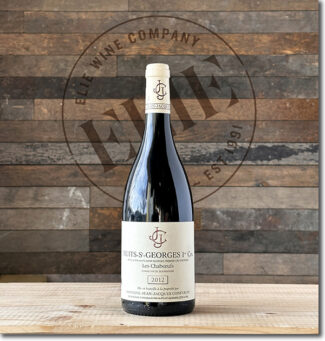 Domaine Jean-Jacques Confuron, 2012 Nuits-St-Georges Premier Cru Les Chabœufs ($220)
Domaine Jean-Jacques Confuron, 2012 Nuits-St-Georges Premier Cru Les Chabœufs ($220)
The nine acres of Pinot Noir vines that make up Les Chaboeufs is located in the strip of vineyards south of Nuits-Saint-Georges, near the commune border with Prémeaux-Prissey. It lies next to the Les Perrières vineyard, below a quarry that lays bare the limestone substrata for which Burgundy is renowned. Subtleties of topography mean that downdrafts tend to channel down the site. The macroclimate here is therefore marginally cooler than those of neighboring vineyards and produce wines that are bright and spicy in their youth, growing gradually more complex with dried herb and cherry.
One-third of the Confuron plot, slightly more than an acre, was planted in 1979 and the rest in 2012.
Grand Cru: Pinot Noir’s Valhalla
Grand Cru perches at the top of the Burgundy quality hierarchy for a simple reason: It is impossible to fine-tune the category further. Whether you (or anyone, critic or consumer) prefers Chambertin to Musigny or Bâtard-Montrachet to Corton-Charlemagne hinges on any number of subjective factors; you may champion a given vineyard for its high quality-to-price ratio, its flavor complexity, because you can resell it for a profit (or some combination therein), and chances are, your list of top wine names will include a few Grand Crus, of which Burgundy has 37.
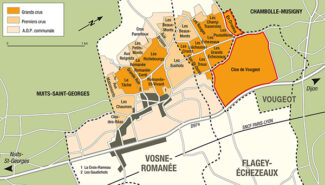
Échezeaux Grand Cru
Échezeaux is huge, organoleptically and physically. At over one hundred acres located within the village of Flagey-Échezeaux, just north of the vineyards of Vosne-Romanée, it is subdivided into 11 lieux-dits which are further broken up into numerous plots owned by 80 individuals from various local families. The Échezeaux du Dessus, Les Poulaillères and En Orveaux lieux-dits on the upper mid-slope are generally recognized as the climat’s best patches because of their stonier, thinner soils and good drainage. This fragmented nature has seen its share of criticism, and there are those who believe that only portions of Échezeaux are truly worthy of Grand Cru status.
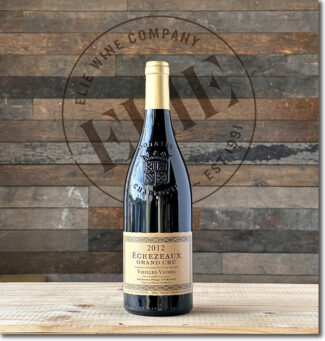 Domaine Philippe Charlopin, 2012 Échezeaux Grand Cru ‘Vieilles Vignes’ ($290)
Domaine Philippe Charlopin, 2012 Échezeaux Grand Cru ‘Vieilles Vignes’ ($290)
Charlopin’s Échezeaux comes from less than one acre of vines planted in the 1920s within En Orveaux, a block at the northern end of the Grand Cru vineyard. It is usually one the last vineyards to be harvested, and there is generally more acidity in the berries, leading to a leaner style of wine. However, the wines tend to show no less fragrance for this and can be exceptionally fine and aromatic—ideal candidates for aging. En Orveaux soils, like many high on the hill along this part of the Côte d’Or, are made up of a thin layer of rocky clay over a hard limestone base.
Clos de Vougeot Grand Cru
The Vougeot commune should be distinguished from its most famous vineyard, Clos de Vougeot, since it also encompasses several other fine climats (several of which are Premier Cru) and has a reputation for excellent white wines as well as reds—rather unusual for the Côte de Nuits. Even red wines from the tiny appellation are allowed to add up to 15% ‘accessory’ varieties, Chardonnay, Pinot Blanc or Pinot Gris.
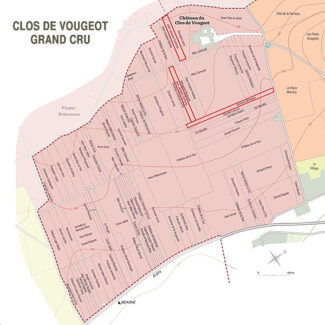
Deriving its name from the small Vouge river, Vougeot (both the Clos and the satellite climats) owes its reputation to the powerful abbey of Cîteaux, who established these vineyards in the 12th century. The best wines of Vougeot are among the most masterful in Burgundy, succulent and mellow allowing a seamless balance between elegance and delicacy and meaty fullness.
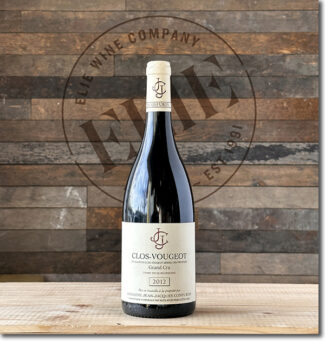 Domaine Jean-Jacques Confuron, 2012 Clos-Vougeot Grand Cru ($390)
Domaine Jean-Jacques Confuron, 2012 Clos-Vougeot Grand Cru ($390)
The grapes for Confuron’s Vougeot Cru come from a one-acre plot of vines that were planted in 1962; soils are brown and calcareous, rich in clay and alluvium. Confuron’s plot is located in the upper part of the vineyard, just behind the castle. The wine is aged in barrels for 15 to 18 months with 80% new oak. Production is around 2,000 bottles per year.
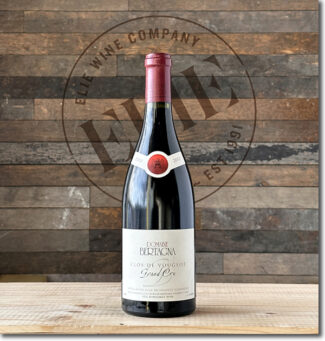 Domaine Bertagna, 2012 Clos de Vougeot Grand Cru ($390)
Domaine Bertagna, 2012 Clos de Vougeot Grand Cru ($390)
Located at the midpoint of the climat, Bertagna’s slightly-under one acre of vines are worked organically, with Guyot-style pruning and green harvesting. The grapes are destemmed and hand-sorted, then given a slow, cool three-week fermentation following which the wines are barreled in 100% new oak for a minimum of 16 months.
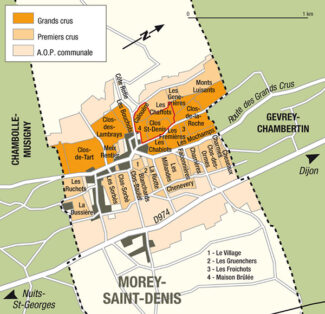
Clos Saint Denis Grand Cru
Referred to as ‘the Mozart of the Côte de Nuits’ for its finely-tuned nuances, Saint-Denis faces east or slightly southeast at an elevation of around 800 feet. The climat is part of a chain that may be seen as a southerly extension of the Grand Crus of Gevrey-Chambertin; first the Clos de la Roche, then Clos Saint-Denis followed by Clos des Lambrays, and finally Clos de Tart leading to Bonnes-Mares.
Limestone dominates the soils of these acres; near the foot of the slope Clos Saint-Denis at the foot of the slope has pebble-free brown limestone soils which contain phosphorus (like Chambertin) and clay (like Musigny).
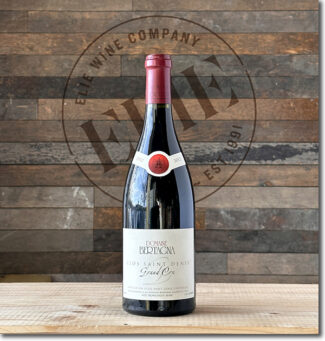 Domaine Bertagna, 2012 Clos Saint Denis Grand Cru ($380)
Domaine Bertagna, 2012 Clos Saint Denis Grand Cru ($380)
Bertagna’s acre-and-a-third at Morey-St-Denis is located next to the Clos de la Roche. The 2012s are just beginning to hit the sweet spot with a nose of forest floor, mushroom with plenty of Morello cherry and black fruit compote remaining; the finish is particularly lengthy and may last longer than the bottle (!)
Notebook …
Decanting and Aeration
Once opened, wine immediately begins a dynamic process of oxidation, encouraged when you swirl the wine in your glass. (Have you ever had a host top off your glass and wonder if the refill came from the original bottle?) Aeration smooths harsh tannins while swirling dissipates the undesirable volatiles that may have developed inside the bottle as acid and alcohol intermix; the warmth from the room and your hands concentrates the aromatics. For most well-produced wines, a period of ‘acclamation’ is necessary for a freshly uncorked wine to reveal its full potential, and with older wines—those that have been cellared for a number of years—this is especially true. Decanting is aeration on a large scale, where the wine is poured into a second vessel, preferably one with a broad bottom to give the wine more surface exposure to oxygen. Since winery labels and bottle design are part of experience, it’s recommended that the wine be returned to its place of origin before serving.
These wines are best served at cellar temperature, 60 – 64 degrees Fahrenheit.
- - -
Posted on 2023.01.13 in Côte de Nuits, Morey-Saint-Denis, Premeaux-Prissey, Nuits-Saint-Georges, Vosne-Romanée, Gevrey-Chambertin, Chambolle-Musigny, Vougeot, France, Burgundy
Featured Wines
- Notebook: A’Boudt Town
- Saturday Sips Wines
- Saturday Sips Review Club
- The Champagne Society
- Wine-Aid Packages
Wine Regions
Grape Varieties
Albarino, Albarín Blanco, Albarín Tinto, Albillo, Aleatico, Aligote, Arbanne, Aubun, Barbarossa, barbera, Biancu Gentile, bourboulenc, Cabernet Franc, Caino, Caladoc, Calvi, Carcajolu-Neru, Carignan, Chablis, Chardonnay, Chasselas, Cinsault, Clairette, Corvina, Counoise, Dolcetto, Erbamat, Ferrol, Frappato, Friulano, Fromenteau, Gamay, Garnacha, Garnacha Tintorera, Gewurztraminer, Graciano, Grenache, Grenache Blanc, Groppello, Juan Garcia, Lambrusco, Loureira, Macabeo, Macabou, Malbec, Malvasia, Malvasia Nera, Marcelan, Marsanne, Marselan, Marzemino, Mondeuse, Montanaccia, Montònega, Morescola, Morescono, Moscatell, Muscat, Natural, Niellucciu, Parellada, Patrimonio, Pedro Ximénez, Petit Meslier, Petit Verdot, Pineau d'Aunis, Pinot Blanc, Pinot Gris, Pinot Meunier, Pinot Noir, Pouilly Fuisse, Pouilly Loche, Poulsard, Prieto Picudo, Riesling, Rondinella, Rose, Rousanne, Roussanne, Sagrantino, Sauvignon Blanc, Savignin, Sciacarellu, Semillon, Souson, Sparkling, Sumoll, Sylvaner, Syrah, Tannat, Tempranillo, Trebbiano, Trebbiano Valtenesi, Treixadura, Trousseau, Ugni Blanc, vaccarèse, Verdicchio, Vermentino, Xarel-loWines & Events by Date
- July 2024
- June 2024
- May 2024
- April 2024
- March 2024
- February 2024
- January 2024
- December 2023
- November 2023
- October 2023
- September 2023
- August 2023
- July 2023
- June 2023
- May 2023
- April 2023
- March 2023
- February 2023
- January 2023
- December 2022
- November 2022
- October 2022
- September 2022
- August 2022
- July 2022
- June 2022
- May 2022
- April 2022
- March 2022
- February 2022
- January 2022
- December 2021
- November 2021
- October 2021
- September 2021
- August 2021
- July 2021
- June 2021
- May 2021
- April 2021
- March 2021
- February 2021
- January 2021
- December 2020
- November 2020
- October 2020
- September 2020
- August 2020
- July 2020
- June 2020
- May 2020
- April 2020
- March 2020
- February 2020
- January 2020
- December 2019
- November 2019
- October 2019
- September 2019
- August 2019
- July 2019
- June 2019
- May 2019
- April 2019
- March 2019
- February 2019
- January 2019
- December 2018
- November 2018
- October 2018
- September 2018
- August 2018
- July 2018
- June 2018
- May 2018
- April 2018
- March 2018
- February 2018
- January 2018
- December 2017
- November 2017
- October 2017
- September 2017
- August 2017
- July 2017
- June 2017
- May 2017
- April 2017
- March 2017
- February 2017
- January 2017
- December 2016
- November 2016
- October 2016
- September 2016
- August 2016
- July 2016
- June 2016
- May 2016
- April 2016
- March 2016
- February 2016
- January 2016
- December 2015
- November 2015
- October 2015
- September 2015
- August 2015
- July 2015
- June 2015
- May 2015
- April 2015
- March 2015
- February 2015
- January 2015
- December 2014
- November 2014
- October 2014
- September 2014
- August 2014
- July 2014
- June 2014
- April 2014
- March 2014
- February 2014
- January 2014
- December 2013
- November 2013
- October 2013
- September 2013
- August 2013
- July 2013
- June 2013
- May 2013
- April 2013
- March 2013
- February 2013
- January 2013
- December 2012
- November 2012
- October 2012
Search



